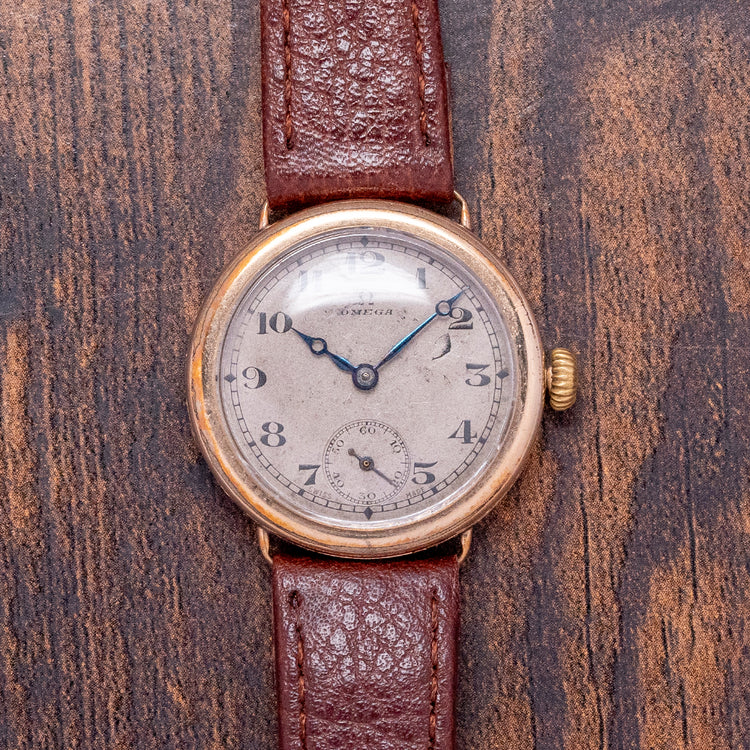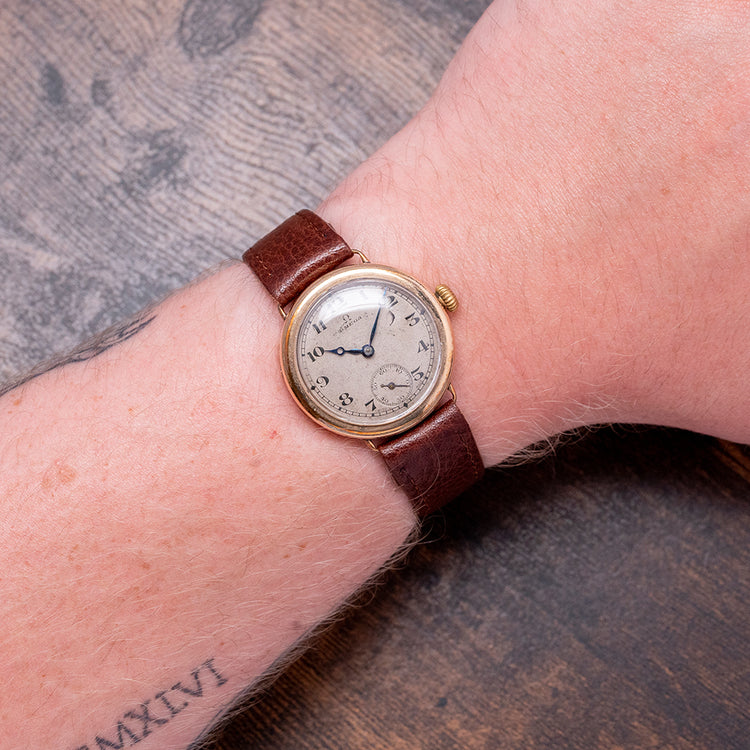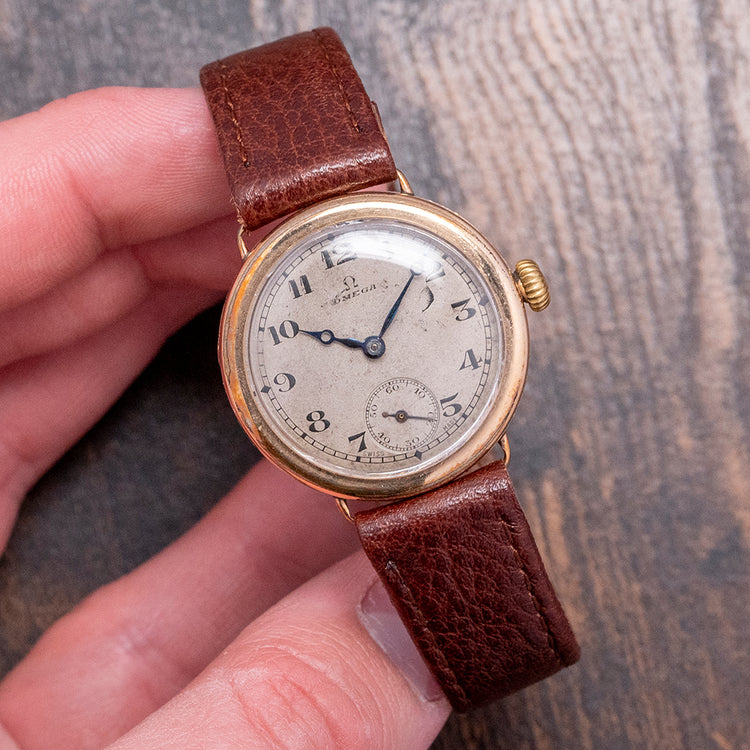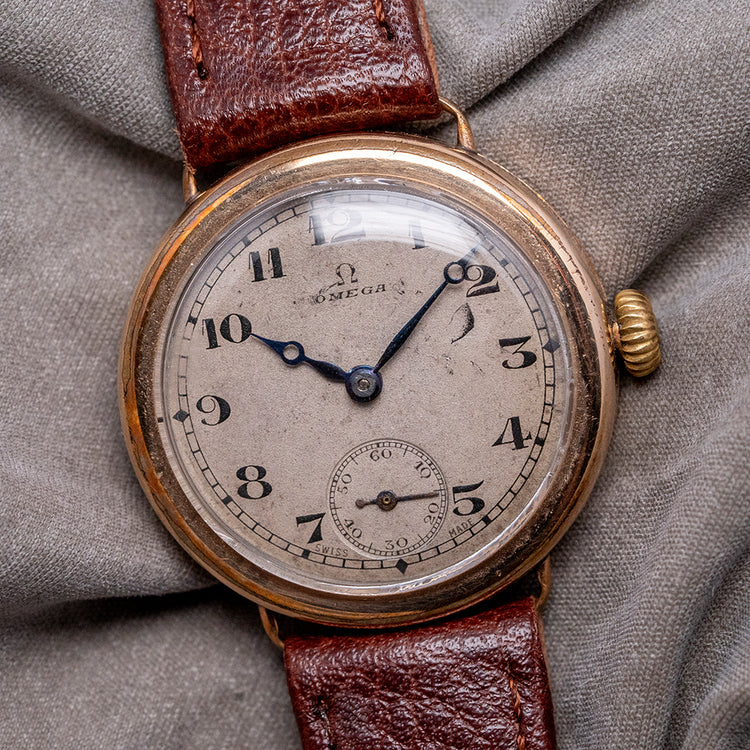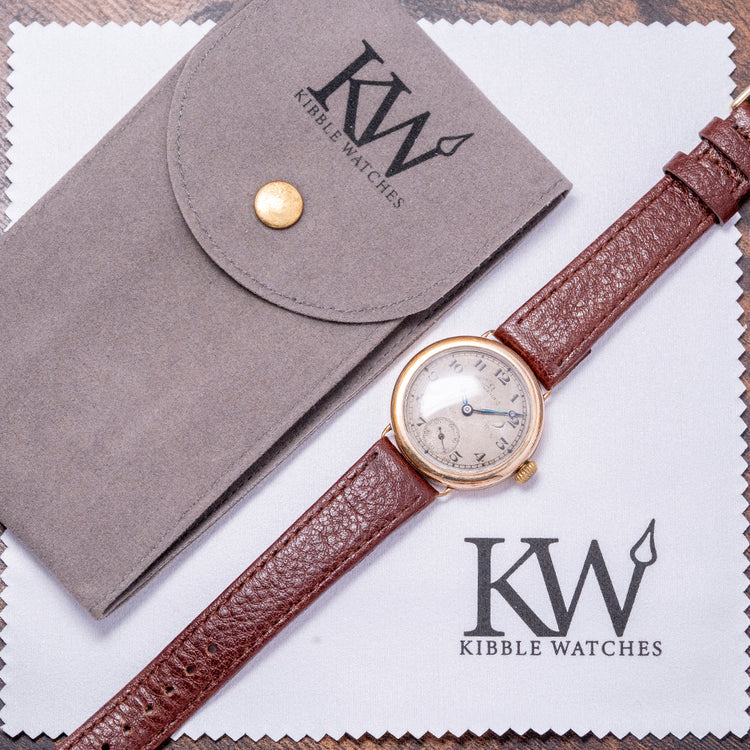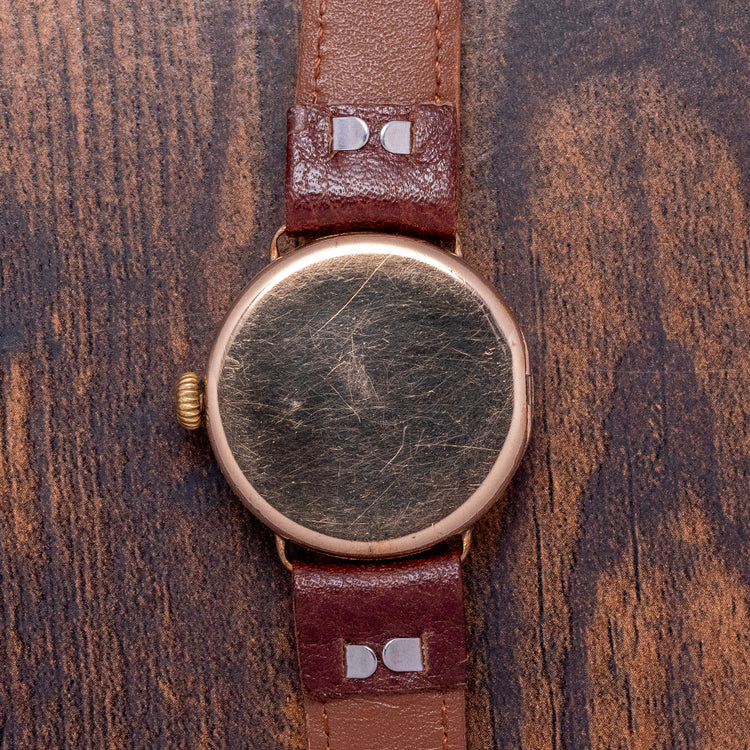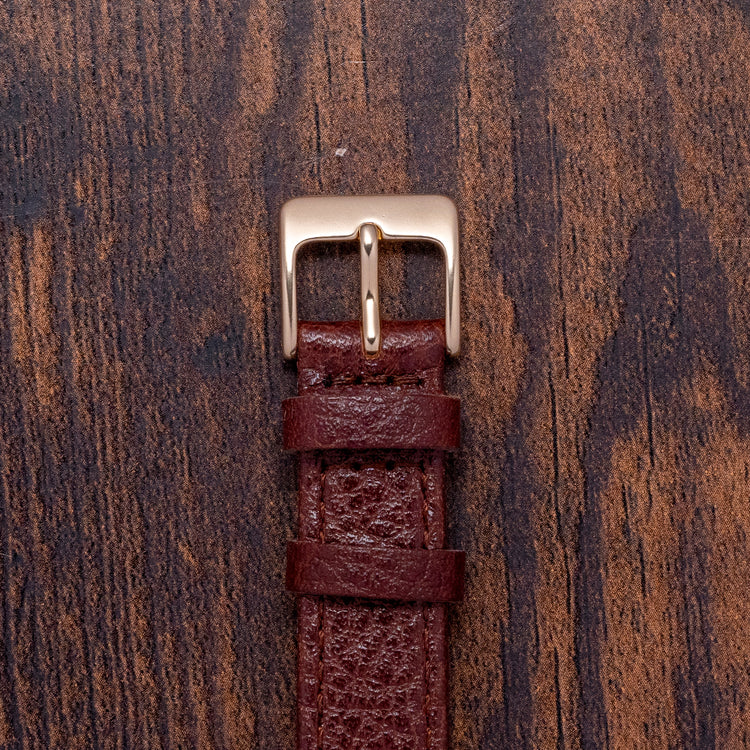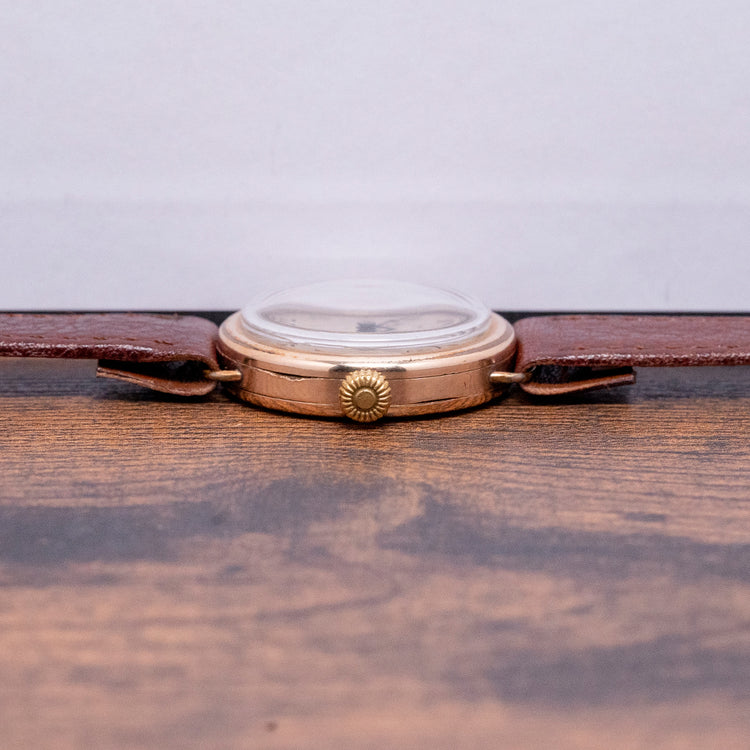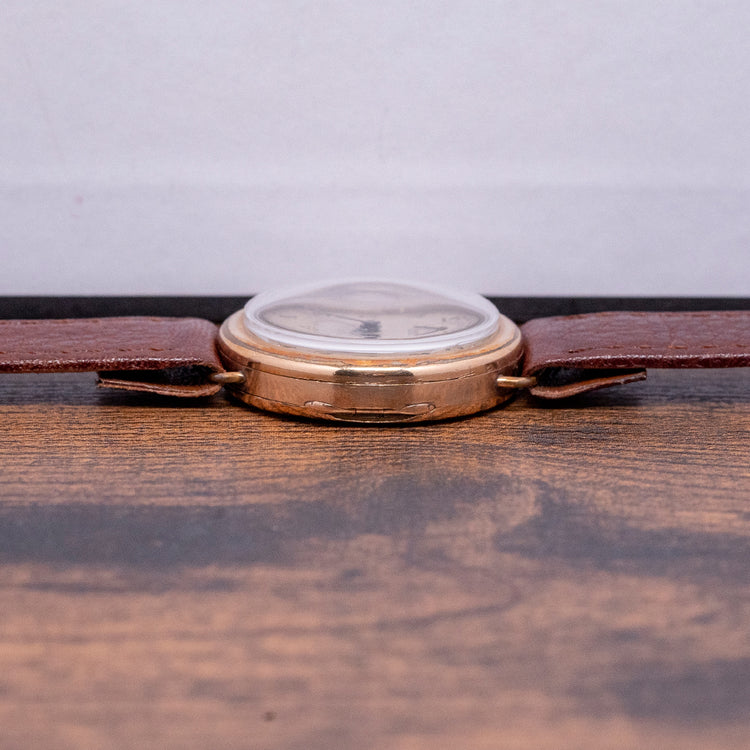More Information
Description
More
Less
Here we have a 102-year-old 1923 Omega Pink Gold-Plated, Manually Wound 26.5 S.O.B. with a rare 31mm Dennison-made in England round case, featuring delicate fixed lugs. A.L. Dennison moved to Birmingham around 1871, where he produced high-quality watch cases. In no time, Omega took notice and commissioned ALD. Some of Omega’s finest cases are made by Dennison. Its curved flanks lead to a lug-to-lug length of 34mm and a case thickness of 10 mm, ensuring a comfortable fit on your wrist. On the right side, there is an onion crown. The smooth bezel holds a domed crystal above a beautiful patina dial, reminiscent of those found on vintage pocket watches. An outer minute rail track with black diamonds and square-shaped indexes surrounds black Breguet numerals marking the hours. Curvaceous Breguet thermally blued hands sit majestically above a running seconds subdial at 6 o’clock. At noon, the Omega motif completes this distinctive, rare timepiece. On the reverse, a Hunter pocket watch-style hinged opening case back, with the case manufacturer and engraved reference number. Beating away is the manually wound Omega Cal. 26.5 S.O.B, 15 jewels, beating at a leisurely 18,000 beats per hour. It comes paired with a 16mm leather strap and pin buckle.
Points of Mention
More
Less
Personal Note
More
Less
Specification
More
Less
Movement : Manually Wound Omega Cal. 26.5 S.O.B
Age : Circa. 1923
Year : 1923
Case Size : 31mm
Case Thickness : 10mm
Lug to Lug : 34mm
Lugs : 16mm
Condition : Pre-Owned
Box and Papers : None
Case Material : Rose Gold Plated
Warranty : 12 Months NON-Waterproof Warranty
The wrist model's wrist size is 7inch
About Omega
More
Less
Description
Here we have a 102-year-old 1923 Omega Pink Gold-Plated, Manually Wound 26.5 S.O.B. with a rare 31mm Dennison-made in England round case, featuring delicate fixed lugs. A.L. Dennison moved to Birmingham around 1871, where he produced high-quality watch cases. In no time, Omega took notice and commissioned ALD. Some of Omega’s finest cases are made by Dennison. Its curved flanks lead to a lug-to-lug length of 34mm and a case thickness of 10 mm, ensuring a comfortable fit on your wrist. On the right side, there is an onion crown. The smooth bezel holds a domed crystal above a beautiful patina dial, reminiscent of those found on vintage pocket watches. An outer minute rail track with black diamonds and square-shaped indexes surrounds black Breguet numerals marking the hours. Curvaceous Breguet thermally blued hands sit majestically above a running seconds subdial at 6 o’clock. At noon, the Omega motif completes this distinctive, rare timepiece. On the reverse, a Hunter pocket watch-style hinged opening case back, with the case manufacturer and engraved reference number. Beating away is the manually wound Omega Cal. 26.5 S.O.B, 15 jewels, beating at a leisurely 18,000 beats per hour. It comes paired with a 16mm leather strap and pin buckle.
Points of Mention
Personal Note
Specification
The Brand
Enquire or Book an Appointment
Would you like to discover further details about this watch, or perhaps arrange an appointment to view and try it on? Complete this form and a member of our team will get back to you shortly.
You May Also Like


























